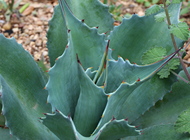 |
Habranthus robustus |
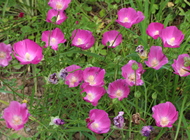 |
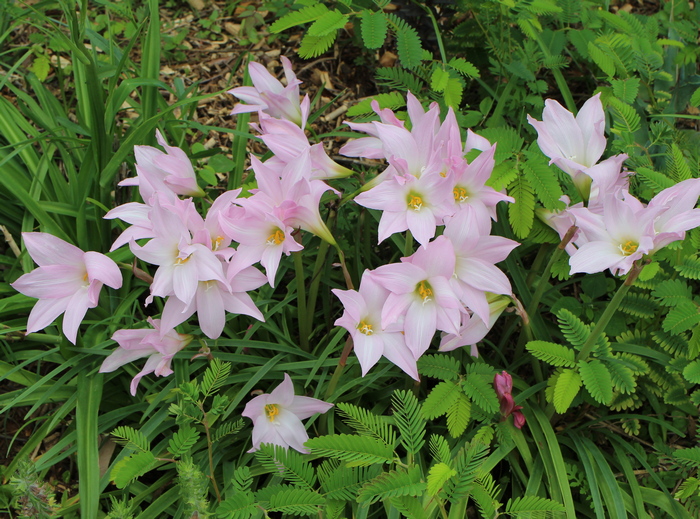
| | Growing in our Texas garden, surrounded by partridge peas |
|
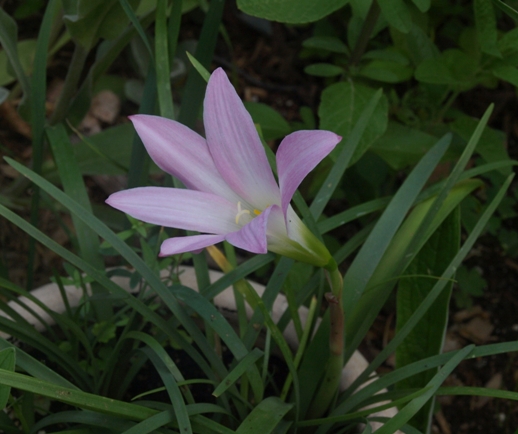
| | Our Pennsylvania potted specimen |
| Synonym(s) |
Zephyranthes robusta |
| Common name |
Argentine rain lily |
| Family |
amaryllidaceae |
| Life cycle |
perennial (Z8-10) |
| Flowers |
pink (summer) |
| Size |
8-10" |
| Light |
sun-part shade |
From seed  |
germinate at room temperature; self-seeds sparingly in our garden
detailed seed-starting info below
|
In Pennsylvania, I didn't fuss much with tender bulbs, but I made an exception for this one, to see if it would live up to the raves. Grown from seed one year, it overwintered in a pot in our garage, and didn't pose too much trouble. Probably due to its cramped quarters, combined with lack of fertilizing, it didn't make a magnificent display, but I was pleased to see its soft-pink flower appear suddenly one day in early July.
Fast forward a good number of years, and we find ourselves transplanted from Pennsylvania to Texas, where these bulbs are perfectly hardy. I grew a new batch from seed, and was rewarded in the years following with a good number of sturdy plants (they multiply, too). The flowers are somewhat different in form from the ones I'd seen in Pennsylvania, with a floppier (handkerchief-like) habit and pointier petals. Looking at internet photos, there does seem to be a good bit of variability in flower form. They start blooming a little later than many other rain lilies in our garden, but make a nice splash when they're finally ready, typically sometime in May – after which they flower sporadically throughout the warm season. I appreciate the many flowers they throw at me.
|
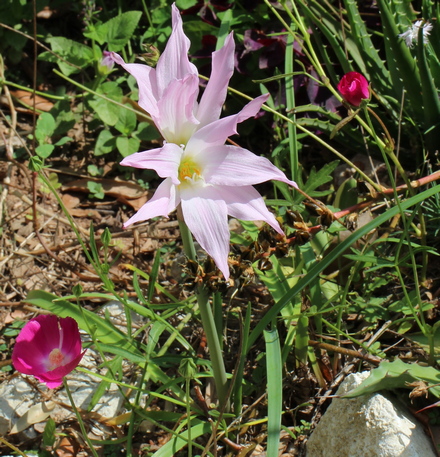
| | Happily living in the rock garden |
| 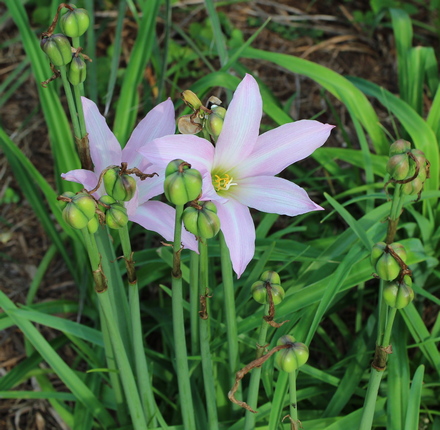
| | A few flowers among many seedheads |
|

| | A multitude of buds preparing for the first flush of bloom in late May |
|
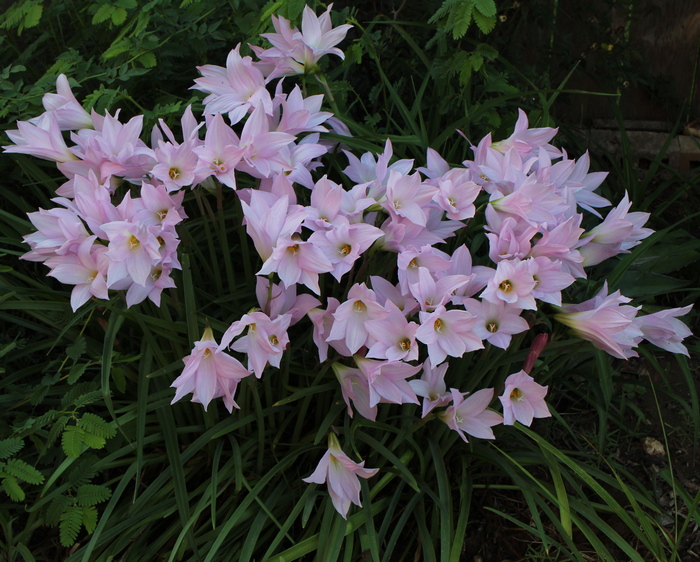
| | In full bloom, two days later |
|
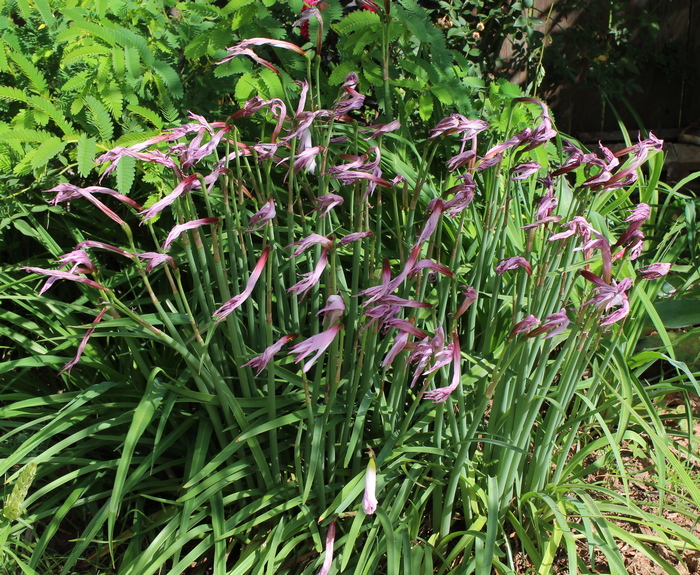
| | Four days later, the show is over. The aftermath has its own charm. |
|
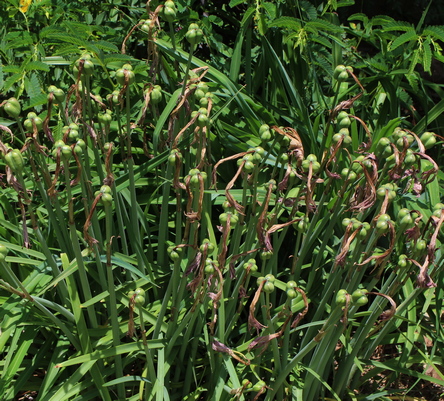
| | Five days later: plump seedheads |
| 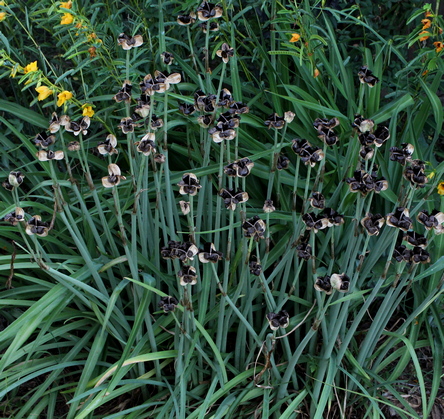
| | Two weeks later: ripened seedheads spilling their contents |
|
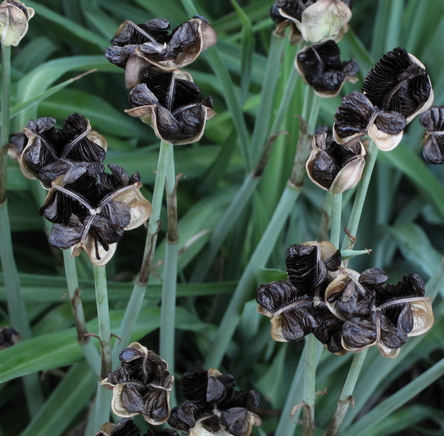
| | Each seed pod splays open to reveal rows of tightly packed flat black seeds |
| 
| | I like how the center parts of the flower are still unfurling in this picture |
|
In our garden, this plant grows in the following areas: back fence border, Houston rock garden, houston front yard, left fence nursery area A page about all the rain lilies in our garden About my plant portraits
PlantLinks to other web pages about Habranthus robustus
Visitors to this page have left the following comments| Jim | Jul 10, 2008 | This one happily survives year round in the ground here in zone 7b - it just needs lots of sun. |
| Carlota | Aug 20, 2013 | Do deer eat them?
I don't know – maybe somebody else will chime in. |
- Seed from HPS/MAG '05/'06 exchange. Baggy 70F (100%G, 7-12d)
- Same seed as above. Baggy 65F (60%G, 6-14d)
- Seed from NARGS '17/'18 exchange. Baggy 70F (88%G, 4-10d)
- Same seed as above. Baggy 70F (71%G, 5-14d)
- Same seed as above. Baggy 70F (55%G, 5-10d)
- Seed from '20 garden. Baggy 70F (100%G, 9-12d)
- Same seed as above. Baggy 70F (72%G, 8-13d)
- Seed from '24 garden. Baggy 70F (90%G, 8-11d)
I welcome comments about my web pages; feel free to use the form below to
leave feedback about this particular page. For the benefit of other visitors
to these pages, I will list any relevant comments you leave, and if
appropriate, I will update my page to correct mis-information. Faced with an
ever-increasing onslaught of spam, I'm forced to discard any comments including
html markups. Please submit your comment as plain text. If you have a
comment about the website as a whole, please leave it in my
guestbook. If you
have a question that needs a personal response, please
e-mail me.
Last modified:
April 19, 2025
Contact me
|













